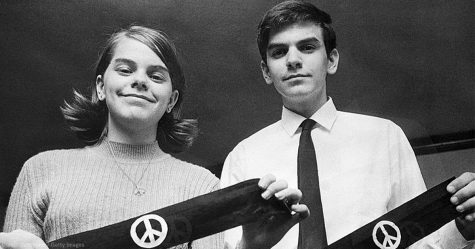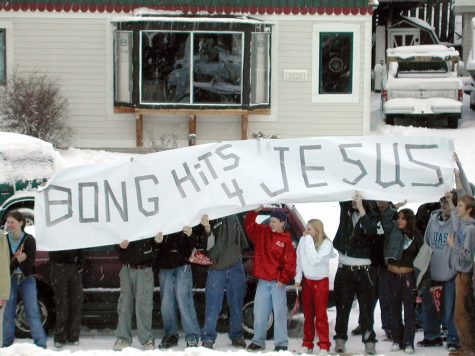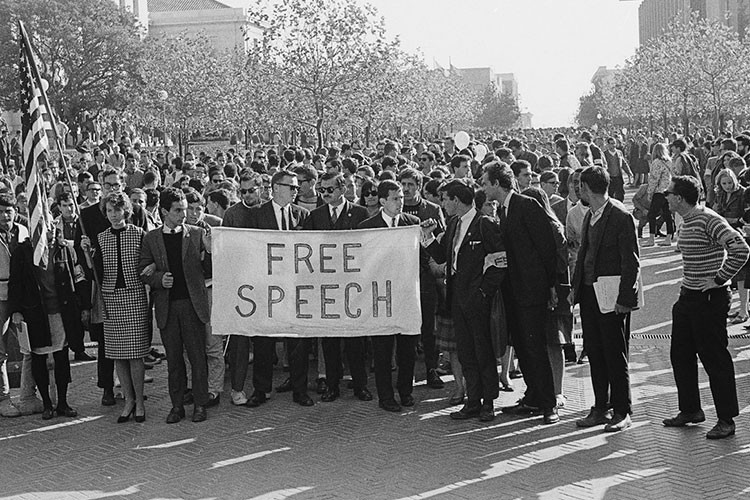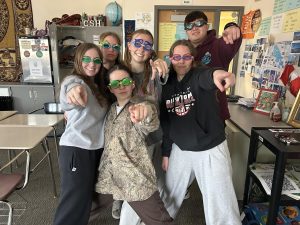What are my Freedom Of Speech Rights in School?
May 28, 2021
“Congress shall make no law…abridging the freedom of speech, or of the press; or the right of the people peaceably to assemble, and to petition the Government for a redress of grievances”
Freedom of speech is one of the most important terms in our legislature, but our modern understanding of the first amendment has evolved greatly. Historically our country’s interpretation of what exactly is protected within the guise of freedom of speech has varied widely, especially the rights of students. Every American citizen is protected under the constitution, but there are must be some clear limitations. For example, child pornography is not protected under freedom of speech and is a clear limitation. But this raises some questions, what are the limitations of my freedom of speech in a school as a student? And, how has that change in our new digital age?

One of the most important early cases for students freedom of speech is the Tinker v. Des Moines Independent Community School District (1969) case. In December of 1965 in Des Moines Iowa, a group of students decided to protest the Vietnam War by wearing black armbands. The school got wind of this protest and immediately put a ban on all armbands; when the students arrived at the school they were suspended. A total of 5 students were suspended including Mary Beth Tinker (13 years old), her brother John Tinker (15 years old), and Christopher Eckhart (16 years old); after being suspended, the students went to the American Civil Liberties Union of Iowa and sued the school district. After 4 long years, the case ended up in the Supreme Court where the justices ruled 7-2 in favor of Tinker. Delivered by Justice Abe Fortes, it was the opinion of the court that the armbands represented a pure form of speech and thus were protected by the constitution. The most important thing to come from Tinker is the precedent that it set for future student speech cases; in the court’s opinion, Fortes declared that for a school to punish speech officials must “materially and substantially interfere” with the school environment. But in perhaps the most famous quote to come from this case, Fortes asserted that both students and teachers did not “shed their constitutional rights to freedom of speech or expression at the schoolhouse gate.”
Since Tinker, there have been many other student freedom of speech issues.

8/22407813/supreme-court-cursing-cheerleader-mahanoy-school-free-speech-tinker-kavanaugh-sotomayor
https://www.oyez.org/cases/1968/21
https://www.freedomforuminstitute.org/about/faq/what-has-the-supreme-court-said-about-free-expression/
https://www.uscourts.gov/educational-resources/educational-activities/facts-and-case-summary-tinker-v-des-moines
https://newseumed.org/tools/debate-comparison/exercising-free-speech-schools
https://mtsu.edu/first-amendment/article/227/west-virginia-state-board-of-education-v-barnette
https://www.mtsu.edu/first-amendment/article/931/rights-of-students
https://constitutioncenter.org/blog/tinker-v-des-moines-protecting-student-free-speech
Hazelwood v Kuh…
Tinker v. Des Moines Independent Community School District (1969), Bethel School District No. 403 v. Fraser (1986) and Hazelwood School District v. Kuhlmeier (1988)







